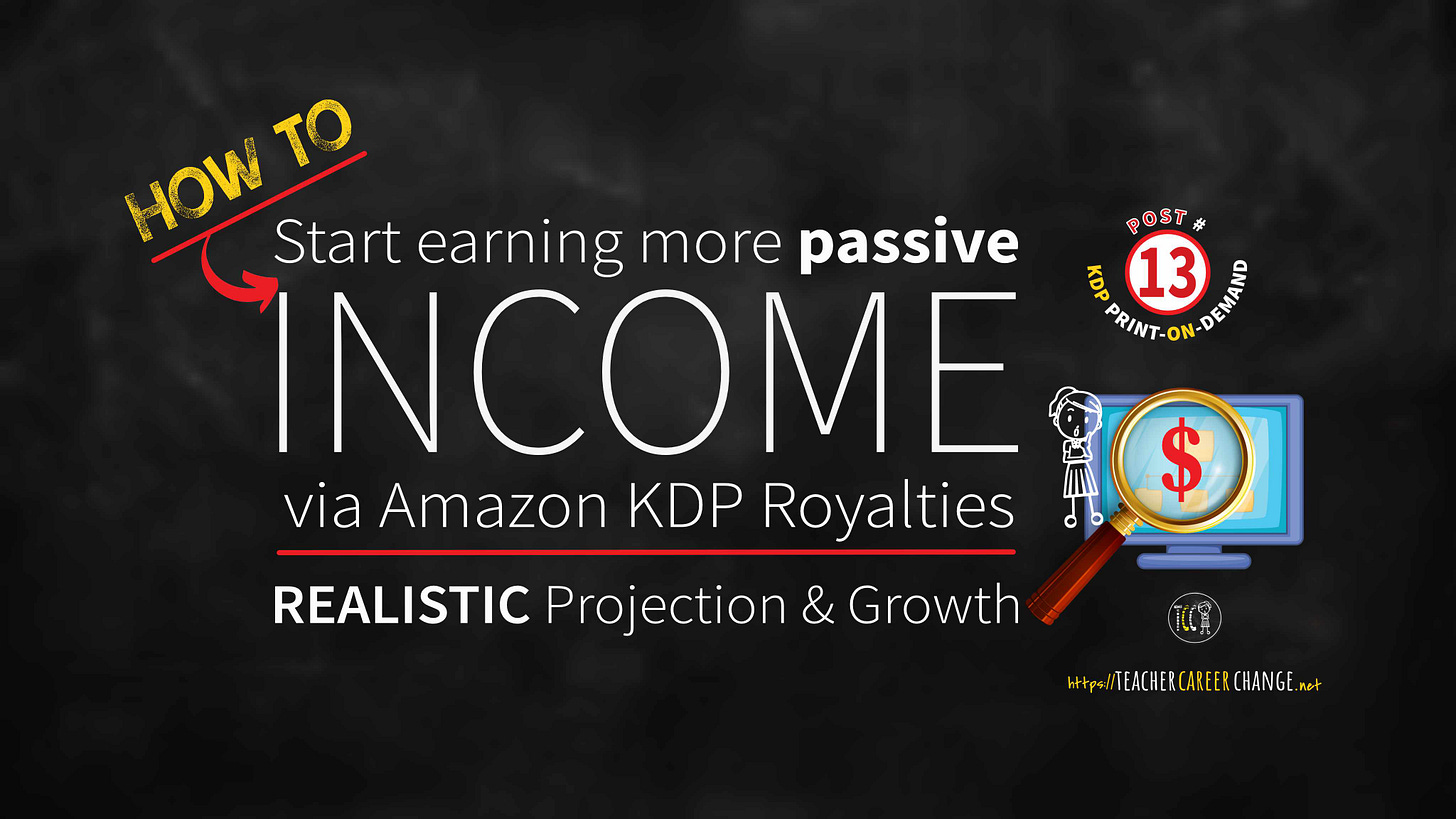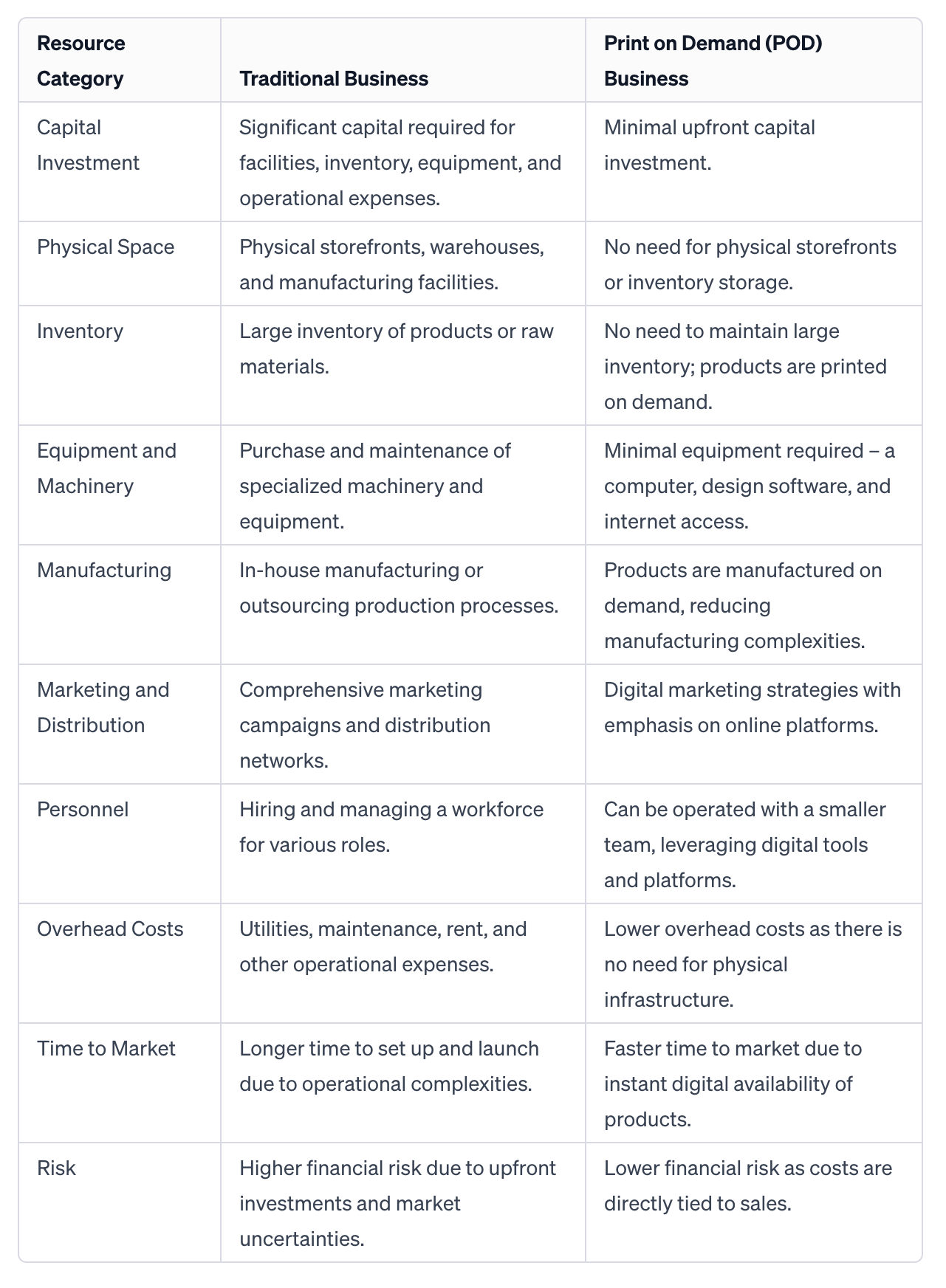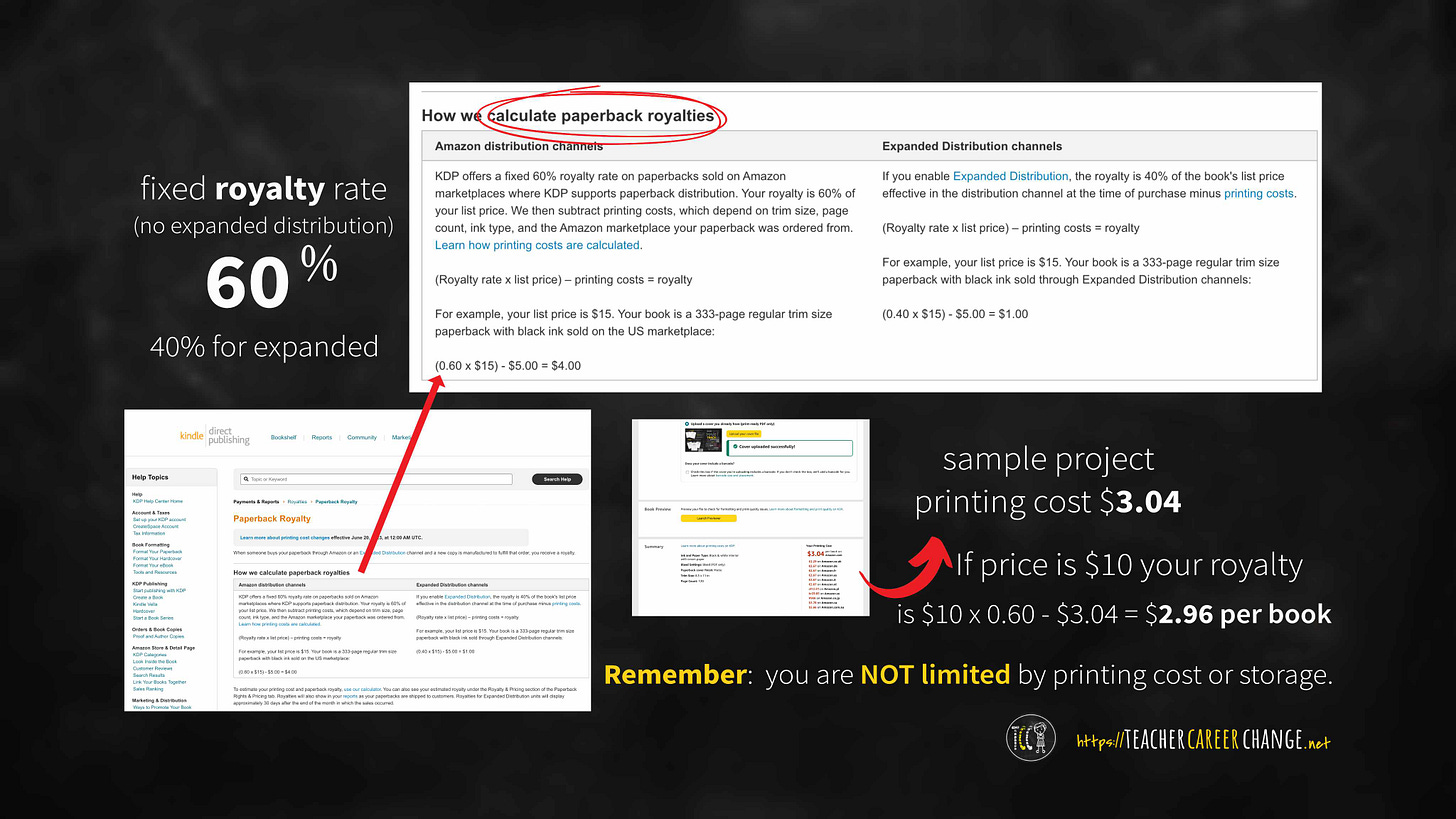How to Start Earning More Passive Income via Amazon KDP Royalties
Realistic Projection and Growth in POD Low-Content Books (Post #13 POD)
After learning how to list your first low-content book, how can you start earning more passive income via Amazon Kindle Direct Publishing (KDP)? As in everything, you ultimately reap what you sow. Let me explain, using a planting and harvesting metaphor, how we can increase our royalties from KDP Before we talk about harvesting, let us count the cost and the opportunities being given to us.
Cost of POD versus Traditional Business
When you self-publish low-content books via Amazon KDP, you are entering the print-on-demand (POD) business. Traditionally, publishing books cost a lot. With POD books, Amazon is shouldering most of the cost. Look at the table below to see what resources are given to you for free by the KDP platform.
In other words, you do not have to invest on printing equipment, office and inventory space, personnel and other traditional costs. You do not even have to pay an Amazon KDP membership fee for it is free to join. Your investment is minimal (compared to traditional business) but it takes time, effort and determination to earn. With this larger perspective, let us look at the earning percentage Amazon gives its self-publishers.
KDP: A Field Where we can Sow
Going back to our sowing and reaping metaphor, look at KDP as a field we are invited to sow our seeds. Here are what we will get:
ability to sell our low-content book via Amazon.com and their international counterparts (10 or more countries)
use of their on-demand printing equipment
absence of storage cost
access to marketing and advertising tools like Author listing and Amazon Ads
and more
I discussed book royalty as a passive income in the third post of this series. Now let’s look at the KDP royalty structure.
The screenshots above show the potential royalty for one book. Remember, you are NOT investing any printing cost or inventory. Your book will be printed only when somebody orders it - that’s the essence of print-on-demand books. However, you have to consider KDP costs and put it aside. The example above shows the printing cost of a sample project I showed before. If we price it at $10, we will only get $2.96 per book which might seem small at first. Yet unlike classroom teaching or any other type of hourly work, your bulk effort for this book is already done. Yes, you might want to improve its listing or market it, but the main work for this book is finished. Look at it as a seed you can multiply:
10 books sold = $29.60
100 books sold = $296
1000 books sold = $2,960
It might take months or even years, but it has the potential to bear fruit. If it failed to generate income, it is time to create more books with a goal.
Realistic Earning Goal
Remember our post on how to list and self-publish your first KDP low-content book? We broke them down into smaller steps. We will do that again with a starter question: how much do you want to earn from low-content books? Then, we will work backwards. So let’s start with a nice round number of $2000 per month. If we earn only $2 per book, that means we have to sell 1000 books. What does this look per week and per day?
to earn $2000 per month, you need to sell 1,000 books ($2 royalty)
1000 divided by 4 weeks = 250 books per week
250 divided by 7 days (remember, people buy 24/7) = 35 books per day
At first, selling 35 books per day seems impossible if you are selling only one low-content book. So, we’ll increase the number of low-content books we sell. Let’s assume that our book only sells once a month (but will likely sell a lot more), that means you have to produce 34 other books, increase your selling price, and/or market your book. In other words, you have to sow more seeds and nurture your POD field.
Filter, Choose then Create More LCBs
How do you increase the number of low-content books in your KDP bookshelf without stressing yourself? Find what is selling at Amazon that you already have or can easily produce. I showed you how to find Amazon keywords in a past post. Do it again. This time use words that you use at work. I was a SPED teacher so I looked for IEP planners, behavior charts and Math help. I am sure you have more. Then, look at the digital or print files you already have and convert them to simple low-content books. If you want to work faster, consider 3rd Party KDP tools I described in a previous post.
Bigger Picture: Use it to Promote Your Services/Career
If you want to earn more faster, offer services then create low-content books that will promote them. Here are some ideas:
student planner to promote your private tutorials
blank journals that complement your speaking engagements
complimentary notebooks for your Professional Development courses
co-teaching planner for inclusion or resource speakers
daily journals for counselors
Giving out low-content books is better than handling out calling cards that they can easily throw away. Make sure that you put your contact details somewhere in the book. We’ll wrap up this series next week and talk about how to overcome three common challenges when starting a POD low-content book business.




